#kondhana
Text
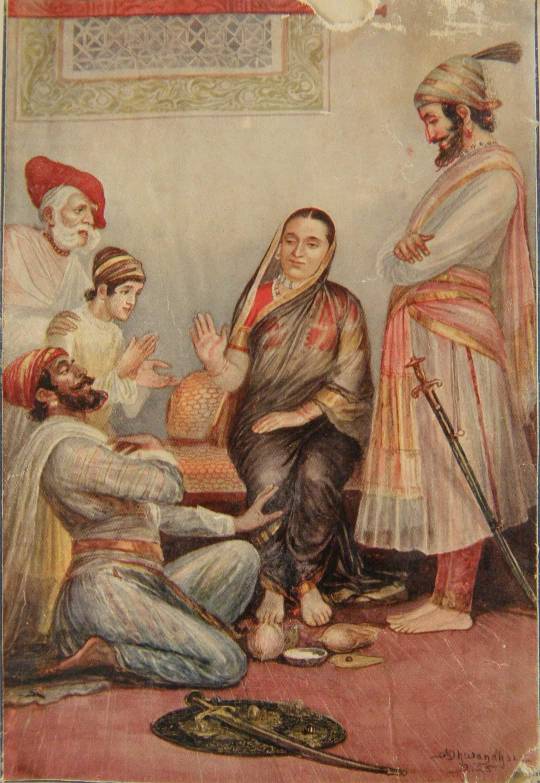
Tanaji's Vow. The fort of Kondhana dominated the landscape. Whosoever occupied it could easily control a large territory. Which meant that every emerging power sought to control this fort. The fort was also quite secure. An aggressor would have to pay heavily for attacking it. The fort also had a special significance for young Shivaji. It was here that, the historian Grant Duff reports, c. 1636, the Mughals had confined his mother Jijabai, when Shivaji was a little more than five years of age. By October 1636, Shahji had pressured the Mughals to retreat. But, Adil Shah whom he served chose to appease the Mughal emperor Shah Jahan by debarring Shahji from residing in his Jagir of Pune. At this Shahji handed over the management of his Jagir of Poona to Jijabai. Jijabai turned out to be a good manager. With the help of Dadaji Konddev she began to transform Pune from the market village that it was to a flourishing city. The territories of Chakan, Supa, Baramati and Indapur; all of them to be ruled from Sinhagad. A new settlement called Shivapur was set up at the foot of Kondhana. Dadaji Konddev is also said to have developed a new variety of mango at Shivapur known as the Shivapur mango. A worried ruler of Bijapur noted in a letter dated 1st August 1644 ce, that Dadaji had taken full control of fort Kondhana on behalf of Shahji Bhonsale. A little while later Dadaji passed away and people began to notice that the key person behind establishing control over the Maval region was neither Shahji nor Dadaji but Shivaji, who was about 15 years of age. From this point onwards, for the next three decades, Shivaji would continue to fight to retain control over Sinhagad while the Mughals tried to resist him.
Picture painted by M V Dhurandhar depicting Tanaji taking a vow to Jijabai and Shivaji to win back the fort of Sinhagad. This vow was done in the presence of his son and uncle, both of whom are seen in picture.
M V Dhurandhar paints the 20th century depiction by M.V. Dhurandhar of Tanaji's vow to Shivaji and Jijabai in the presence of his son and uncle before the campaign for Kondana fort.
13 notes
·
View notes
Text
सिंहाच्या सामर्थ्याने नरवीर शत्रूवरी धावला,
शौर्यानेच तानाजींच्या कोंढाणा 'सिंहगड' जाहला !!
#नरवीर
#सुभेदार
#तानाजी_मालुसरे
स्मृतिदिन | विनम्र अभिवादन !!
(CONTENT ©️ COPYRIGHT)
9049494938 | 8626020202
#तानाजी_मालुसरे #chatrapatishivahimaharaj #tanajimalisare #tanaji #kondhana #mavla #swarajya #viral #pune #punecity #Jagdamb

0 notes
Text

The Majestic Forts of Maharashtra: A Journey Through History and Nature.
Maharashtra, a state in Western India, boasts a rich and vibrant history, evident in its numerous forts scattered across the landscape. These forts, some dating back centuries, stand as testaments to the architectural prowess and strategic brilliance of past rulers. But beyond their historical significance, these forts offer a unique blend of adventure, natural beauty, and cultural immersion, making them a must-visit for any traveller to Maharashtra.
1. Raigad Fort: The Symbol of Maratha Glory.
Raigad Fort rises majestically atop a hill, overlooking the lush Konkan plains. This fort was the capital of the Maratha Empire under the legendary Shivaji Maharaj, and its ramparts still echo with the tales of his bravery and leadership. The fort boasts impressive structures like the queen's palace, the royal baths, and the samadhi (tomb) of Shivaji Maharaj. The view from the fort's summit is simply breathtaking, offering panoramic vistas of the surrounding countryside.
2. Shivneri Fort: Where Legends Began.
Shivneri Fort, located near Junnar, holds a special place in Maratha history. It was the birthplace of Shivaji Maharaj and served as the Marathas' early stronghold. The fort's rugged terrain and strategically designed defenses made it virtually impregnable, allowing Shivaji to plan his many successful campaigns. Today, the fort houses a museum dedicated to Shivaji's life and legacy, offering visitors a glimpse into the early days of the Maratha Empire.
3. Sinhagad Fort: A Site of Epic Battles.
Sinhagad Fort, also known as Kondhana, stands witness to one of the most iconic battles in Maratha history. In 1670, Tanaji Malusare, a loyal commander of Shivaji, led a daring attack on the strategically important fort, ultimately sacrificing his life to secure a Maratha victory. The fort's ramparts offer stunning views of the surrounding hills and valleys, and the Tanaji Malusare memorial stands as a tribute to his bravery.
4. Pratapgad Fort: Echoing with Echoes of Valor.
Pratapgad Fort, perched atop a hill near Satara, was another crucial Maratha stronghold. It was here that Shivaji Maharaj held his coronation ceremony in 1674, marking the formal establishment of the Maratha Empire. The fort is also known for the famous battle of Pratapgad, where Shivaji defeated the Mughal general Afzal Khan in a dramatic hand-to-hand combat. The fort's museum showcases artifacts and weapons from the Maratha era, offering visitors a deeper understanding of this period in history.
5. Lohagad Fort: A Trek Through Nature and History.
Lohagad Fort, located near Lonavala, offers a captivating blend of natural beauty and historical significance. The trek to the fort takes you through picturesque landscapes, offering stunning views of the surrounding valleys. The fort's ramparts provide a glimpse into its past, with remnants of water cisterns, caves, and temples still visible. Lohagad is a haven for trekkers and nature enthusiasts, offering an escape from the hustle and bustle of city life.
6. Janjira Fort: An Island Fortress Steeped in Mystique.
Janjira Fort, located off the coast of Murud, is an island fortress with a unique history. It was built by the Siddi dynasty in the 17th century and remained unconquered for over 350 years. The fort's formidable walls and strategic location made it virtually invincible, earning it the nickname "the impregnable fort." A visit to Janjira offers a glimpse into its maritime past and a unique experience of exploring a fort on an island.
7. Panhala Fort: A Hilltop Haven of Tranquility
Panhala Fort, nestled amidst the lush hills of Kolhapur, is a tranquil escape from the city life. The fort served as the capital of the Marathas for several years and was witness to numerous historical events. Its well-preserved structures, including palaces, temples, and gateways, offer a glimpse into the grandeur of the Maratha era. Panhala is also known for its scenic beauty and is a popular destination for trekking and camping.
This is just a glimpse into the vast and fascinating world of forts in Maharashtra. Each fort has its own unique story to tell, waiting to be explored. So, pack your bags, lace up your shoes, and embark on a journey through history and nature as you discover the majestic forts of Maharashtra.
#maharashtraforts#fortsofmaharashtra#fortsinindia#maharashtra#incredibleindia#historybuff#travelgram#wanderlust#adventureseeker#naturelover#family trips#tours#travel#travelling#couple tour#city tour#india#evokeholidays
1 note
·
View note
Text
Sinhagad Fort, situated approximately 30 kilometers southwest of Pune, has a rich historical background that dates back to the 17th century. Originally known as Kondhana, the fort gained prominence under the Maratha ruler, Chhatrapati Shivaji Maharaj.
0 notes
Text
Sinhagad Fort, Pune: Trekking, Timings, Entry Fee

Conquer The Mighty Fort: Sinhagad Fort Trekking
In Maharashtra, India, close to Pune, there is a mediaeval castle called Sinhagad Fort, also called the Lion Fort. It offers amazing views of the surrounding area from atop a hill in the Sahyadri mountain range. The fort has been a key player in the history of the area and has taken part in various conflicts and conquests. Sinhagad Fort, which was formerly known as Kondhana Fort, has a lengthy and fascinating history. It was purposefully constructed 1,312 metres above sea level, which gave it a natural defence advantage. The Marathas, Mughals, and British were just a few of the different rulers who held the fort at various points in time.
The fabled Battle of Sinhagad in 1670 is one of the most important occasions in the history of Sinhagad Fort trekking. Tanaji Malusare, a Maratha warrior, defended the fort from the Mughal armies commanded by Udaybhan Rathod. Tanaji lost his life in the process of leading his forces to victory after overcoming great odds to retake the fort. His courage and selflessness are still recognised today.
Chhatrapati Shivaji Maharaj, a legendary Maratha warrior, is another figure connected to the fort. It supplied the Marathas with a stronghold throughout their rebellion against the Mughal Empire and functioned as a crucial strategic point. Strong walls, gates, and bastions are all features of the fort’s architecture that attest to its military importance.
Today, Sinhagad Fort trekking draws travellers and history buffs from around the globe. Visitors can stroll around the walls, see the old structures that have weathered the test of time, and explore the ruins.
The journey to the fort is well-liked because it combines scenic beauty with adventure. Maharashtrians maintain a particular place in their hearts for Sinhagad Fort and the Sinhagad Fort trekking, which stands for bravery, tenacity, and the Marathas’ unbreakable character. It serves as both a historical marker and a reminder of the area’s illustrious past and rich cultural heritage.
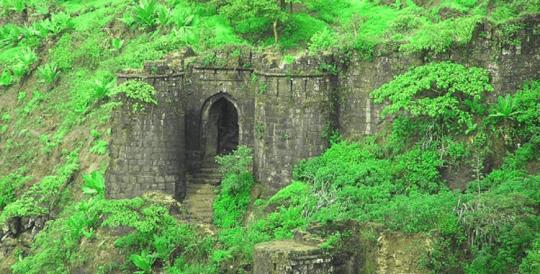
Historical Significance:
1.1 Origins and Early History:
Uncover the origins of Sinhagad Fort, originally known as Kondhana Fort, and its construction during the reign of the Maratha king, Shivaji Maharaj.
Explore the historical events surrounding the fort, including the legendary Battle of Sinhagad between the Marathas and the Mughals.
1.2 Valor and Heroism:
Discover the heroic tales associated with Tanaji Malusare, the brave Maratha warrior who sacrificed his life while capturing the fort from the Mughals.
Learn about the significant role Sinhagad Fort played as a strategic stronghold during various battles fought by the Marathas.
Architectural Marvels:
2.1 Impressive Gates:
Explore the imposing gates of Sinhagad Fort, including the Kalyan Darwaza (Main Gate) and Pune Darwaza, which showcase intricate architecture and offer a glimpse into the fort’s rich history.
2.2 Bastions and Structures:
Marvel at the sturdy bastions that served as defense mechanisms during battles, such as the Tanaji, Kondhana, and Torna bastions.
Discover the remnants of ancient structures within the fort, including temples, granaries, and water reservoirs, which provide insights into the daily lives of the fort’s inhabitants.
Also read:- Kalsubai Trekking – The Ultimate Guide for Beginners
Trail Information For Sinhagad Fort Trekking
Adventure seekers and environment lovers enjoy going on the hike to Sinhagad Fort. To assist you in organising your hiking trip, the following trail information is provided:
Starting Point: The Sinhagad Fort Trekking walk normally begins from the Sinhagad Paytha base or the Atkarwadi village.
Distance: The walk is around 7 kilometres (4.3 miles) long and goes in one direction. The trek’s total length—including the return trip—is roughly 14 kilometres (8.7 miles).
Difficulty Level: The hike is regarded as having a moderate difficulty. There is a gradual incline, as well as some steep stretches and unsteady ground. It necessitates a respectable level of endurance and fitness.
Time required: Depending on your fitness level and pace, the trip to the fort can take 2 to 3 hours. Similar amounts of time are typically required for the descent.
Route of the Trail: The Sinhagad Fort trail offers beautiful scenery and travels through a verdant environment. It is clearly indicated, which makes it simple to follow. Along the route, you may anticipate a mixture of rocky outcroppings, stone steps, and dirt trails.
Rest Stops: The trail is lined with rest stops and stalls where you can stop for a break, rehydrate, and eat or drink some food or drinks.
Best Time to hike: The monsoon season (June to September), when the surrounds are lush and green, is the best time to hike to Sinhagad Fort. To ensure your safety, it’s vital to monitor the weather and steer clear of going on a hike during a storm or period of severe rain.
Essentials: Carry enough water to be hydrated at all times, especially during the summer. Because the terrain might be slippery in some places, wear supportive hiking boots with adequate traction. During the monsoon season, it’s also a good idea to bring a small backpack, sunscreen, insect repellant, a cap or hat and a raincoat or poncho.
Safety Precautions: Trekking in a group is advised for safety reasons, according to the safety precautions. Tell someone about your intended travel and anticipated return time. If local guides are available, heed their advice and proceed with caution when going along edges or up steep inclines.
Keep in mind to respect the environment and leave no trace. Enjoy the adventure while taking in Sinhagad Fort’s trekking and its natural beauty.
Sinhagad Fort trekking distance
The trekking distance to Sinhagad Fort from the base point varies depending on the route you choose to take. The most common and popular route is the Sinhagad Payatha trail, which is approximately 7 kilometers (4.3 miles) long. It typically takes around 2-3 hours to complete the trek, depending on your pace and fitness level.
Please note that the distance and time mentioned above are approximate and can vary based on individual factors and the specific path taken during the trek. It’s always a good idea to check with local guides or authorities for the most accurate and up-to-date information before embarking on the trek to Sinhagad Fort.
Sinhagad Fort trekking time
The trekking time to reach Sinhagad Fort can vary depending on your fitness level, pace, and the route you choose. On average, it takes about 2-3 hours to complete the trek to Sinhagad Fort from the base point. However, this is an estimate and can be influenced by factors such as weather conditions and the specific path taken during the trek.
It’s important to note that the trek involves ascending a hill, and the terrain can be challenging in certain sections. It’s recommended to wear comfortable trekking shoes, carry sufficient water, and take breaks as needed during the ascent. Additionally, it’s advisable to start the trek early in the day to avoid trekking during the hotter hours and to allow ample time for exploration and enjoyment at the fort.
Always check with local authorities or experienced trekkers for the most accurate and up-to-date information regarding trekking time and conditions for Sinhagad Fort.
What To Pack For Sinhagad Fort Trekking:
Here’s a list of essential items to pack for your Sinhagad Fort trek:
Backpack: A reliable backpack to transport all of your necessities.
Water: Bring enough water with you on your trek to stay hydrated.
Snacks: Pack snacks to keep your energy levels high while hiking, such as energy bars, dry fruits, or small, portable nibbles.
Trekking Boots: To negotiate the rocky terrain, put on a pair of cosy trekking boots with good traction.
Clothing: Don trekking-appropriate clothing that is breathable, lightweight, and light. Because cotton tends to hold moisture, avoid using it. Choose textiles that will dry quickly and will wick away moisture. If you think you might need to change, bring a spare set of clothes
Rain Gear: Pack a jacket or poncho if you’re trekking during the rainy season to protect yourself from precipitation.
Hat/Cap: Cover your head and protect yourself from the sun by donning a hat or cap.
Sunglasses: Wear a pair of sunglasses to shield your eyes from glaring sunshine.
Sunscreen: Apply sunscreen with a high SPF to prevent sunburn on your skin.
Insect Repellent: Carry insect repellent with you to fend off mosquitoes and other insects.
First Aid Kit: Basic first aid supplies including sticky bandages, antiseptic cream, painkillers, and any necessary personal drugs should be included in your first aid box.
Trekking pole: Especially during the steep portions of the trail, a trekking pole can offer stability and support.
Power Bank: If you’re travelling with electronic gadgets, consider bringing extra batteries or a power bank to keep your devices powered up so you can stay connected and capture special moments.
Mobile phone and charger: Keep your phone nearby for communication and emergency use. Never leave home without a charger or power bank.
Personal Identification: For identification purposes, keep your identifying documents on you, such as an ID card or passport.
Cash: Bring some cash with you in case you need to pay for admission, drinks, or any other incidentals.
Also Read :- Sinhagad Fort
FAQs
Q1. How long does it take to trek Sinhagad Fort?
The length of the Sinhagad Fort Trekking might vary based on a number of variables, including fitness levels, previous hiking experience, pace, and weather. The journey to the fort from the base often takes between two and three hours, as does the descent. This estimate takes into account rest stops and side trips for sightseeing.
Q2. Who conquered Sinhagad Fort?
The fort was conquered by Suryaji, brother of Tananji Malusare
Q3. Is Sinhagad Fort easy to trek?
It is thought that the walk to Sinhagad Fort is of a moderate difficulty. It doesn’t demand a high level of skill, but it does take some athleticism and endurance. For people who are not used to trekking or physical exertion, the trail’s uneven terrain, some steep sections, and slow ascents may be difficult.
Q4. Sinhagad Fort Trekking Time?
It takes two to three hours to complete the ascent and descent of Sinhagad Fort. Depending on fitness level, tempo, and rest breaks, the exact time may change.
Q5. Sinhagad Fort Trek route?
Starting at Atkarwadi or Sinhagad Paytha base, the journey to Sinhagad Fort follows a clearly designated path across rocky outcrops, stone steps, and dirt trails. As it ascends in the direction of the fort, it offers beautiful scenery.
Source url : https://daastan-e-musafir.com/sinhagad-fort-pune-trekking-timings/
0 notes
Text

Experience the refreshing taste of Hydrate's ionized alkaline drinking water sourced from the tranquil, verdant hills of Kondhana, boasting a pH level of 8.5 mg/l and 99.99% purity, enriched with essential nutrients.
0 notes
Text
Monitor Lizards
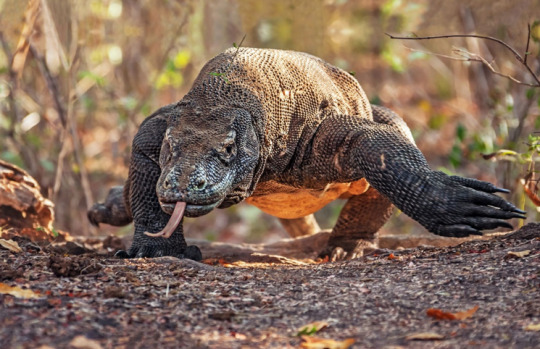
The monitor lizards come from the animalia kingdom, phylum chordata and class reptilia. With their huge size they are known to dominate their surroundings and are the apex predators. They hunt a variety of prey from birds, mammals to a few invertebrates. Although these monitor reptiles were first recorded by Western scientists in 1823, they were well known in India with its local name of ‘ghorpad’, ‘bengal monitors’. Surveys suggest that human intervention in the wild and climatic change will lead to contraction of these reptiles in the upcoming years so they are marked as endangered species by the IUCN Red List. Indonesian government has also founded Komodo Dragon National Park (Komodo dragon a type of monitor lizards) to protect them.
Before coming to its interesting characteristics did you know that Komodo dragon is the world’s deadliest reptile which weighs around 68 to 91kg. It’s size varies from 7.5-8.5ft. Monitor lizards have a far sight of 300m. They can distinguish colours but have poor night vision. Like other reptiles their tongue helps them to detect smell, taste and few senses. The reptiles also have a natural tough armour with rough scales protecting them from their predators. Some of these lizards are venomous and can kill a human with its bite. These are also one of the most intelligent reptiles on Earth, with some species able to count snails at feeding time. A few of them also know how to use their forearms to extract insects from logs.
The tamed monitor lizards are known for their intelligence and truthfulness to their master. One such event was seen on 4th Feb 1670 when a battle was fought between the great Maratha and Mughal empire at Pune, India on fort Kondhana. The attack was planned by the Marathas in the midnight. The Marathi Subedar Tanaji and few of his men reached the bastion of the fort with weapons, ropes and a ghorpad (a type of monitor lizard) named ‘Yaswanti’. Tanaji threw the lizard on the walls of the fort. The lizard failed to grab the walls. This made Tanaji angry and he threatened the lizard for its life it it failed again. Finally the lizard grabbed the walls and climbed up. Consequently, the men climbed up and fought a ferocious battle winning it.
Considering the importance of these lizards in mythology they are considered auspicious. It is believed that killing or even harming lizards in any way invites danger to your coming generations. Even destroying the eggs of lizards can bring a curse on you.
In Hindu religion it is seen that the goddess Parvati performs penance standing on a monitor lizard. One of the main reason for choosing a lizard would be due to the solitary nature of this secretive reptile, which is shy and avoids humans. It can detect human movement from about 250 meters away. This behaviour also tallies with its apt Sanskrit name godha, which refers to the habit of concealing oneself. Since the goddess is engaged in a penance, she prefers standing on it with an undisturbed atmosphere. In this way Hindu tradition has not only given a mount to the goddess but also provided respect to the reptile and has thrown a light on its protection and conservation.
By,
Adwaiet
0 notes
Text
Tanhaji: The Unsung Warrior 2020
Tanhaji: The Unsung Warrior 2020
When Aurangzeb recruits his trusted soldier Udaybhan to control the Kondhana fort, Shivaji’s military leader Tanhaji Malusare and his army of Maratha warriors set out to recapture the fortress.
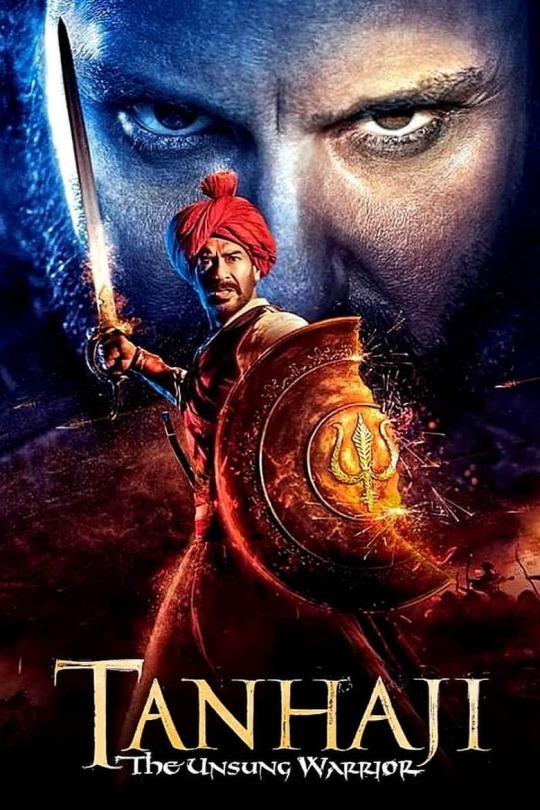
View On WordPress
0 notes
Photo

(Urgently Required) Forest Park Resto Farm (Resort) Address - Atkarwadi, Post -Donje, Sinhgad Paytha Road, Near Kondhana Guest, Pune Call📞 9767696078 #jobrequirements #hoteljobs #hotelstaff #restaurantjobs #resortjobs #waiterskit #workgobiz (at Pune) https://www.instagram.com/p/Ce014pNBl-3/?igshid=NGJjMDIxMWI=
0 notes
Photo

“ गड आला पण सिंह गेला ” – “We gained the fort, but lost the lion” . . . . Follow @nikhilpatilfilms . . . . #nikhilpatilfilms #nikhilpatil18 #sinhagadfort #sinhagad #kondhana #shivajimaharaj #jayshivray🚩 #tanhaji #tanhajitheunsungwarrior #tanhajimalusare #sinhagadroad #fortsofmaharashtra #fortsillphotography #maharashtraforts #trekking #trecker #subhedar #punekars #puneforts #punecity #maharashtratourism #punetouristplaces #punetravellers #instagood #instapic #photography #trending . . . @maharashtratourismofficial @maharashtraguide @maharashtra_forts @sinhagad_riders @puneriguide @jagatbharipune @sopune @tanhajifilm @tanhajimalusare01 (at Sinhagad) https://www.instagram.com/p/Cau2M8ZvRL8/?utm_medium=tumblr
#nikhilpatilfilms#nikhilpatil18#sinhagadfort#sinhagad#kondhana#shivajimaharaj#jayshivray🚩#tanhaji#tanhajitheunsungwarrior#tanhajimalusare#sinhagadroad#fortsofmaharashtra#fortsillphotography#maharashtraforts#trekking#trecker#subhedar#punekars#puneforts#punecity#maharashtratourism#punetouristplaces#punetravellers#instagood#instapic#photography#trending
0 notes
Photo
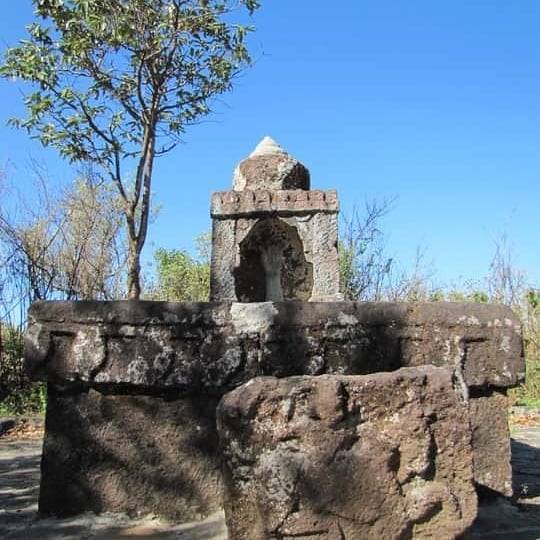
आज नरवीर तानाजी मालुसरे यांची पुण्यतिथी. त्यांना आदरांजली म्हणून .. https://youtu.be/0mhhB_uV71Y #यूट्यूब #tanhaji #tanhajitheunsungwarrior #tanajimalusare #tanhajimalusare #marathaempire #marathas #History #marathahistory #sinhagadfort #sinhagad #kondana #kondhana https://www.instagram.com/p/CK4OvpNpLXT/?igshid=bq2u425bn17w
#यूट्यूब#tanhaji#tanhajitheunsungwarrior#tanajimalusare#tanhajimalusare#marathaempire#marathas#history#marathahistory#sinhagadfort#sinhagad#kondana#kondhana
0 notes
Photo

#नरवीर #सुभेदार_तानाजी_मालुसरे #पुण्यतिथी #४_फेब्रुवारी ® JAGDAMB CREATIVE HUB PVT. LTD. 90 494949 38 © Digital yugat, No Tiv Tiv... Only CREATIVE [email protected] #narveer #tanajimalusare #subhedar #swarajya_rakashak #kondhana #sinhgad #shivaji_maharaj #sambhaji_maharaj #hindavi_swarajya #hindu #movie_poster #jagdamb #jagdamb_creative #JCH #Jagdamb_pune #printing_hub #marathi_calligraphy_logo #Marathi_Calligraphy #pune #mumbai #photoofthedaychallenge (at Jagdamb Creative Hub Pvt. Ltd.) https://www.instagram.com/p/B8I_qKSh201/?igshid=1pob2h0ridpa8
#नरवीर#सुभेदार_तानाजी_मालुसरे#पुण्यतिथी#४_फेब्रुवारी#narveer#tanajimalusare#subhedar#swarajya_rakashak#kondhana#sinhgad#shivaji_maharaj#sambhaji_maharaj#hindavi_swarajya#hindu#movie_poster#jagdamb#jagdamb_creative#jch#jagdamb_pune#printing_hub#marathi_calligraphy_logo#marathi_calligraphy#pune#mumbai#photoofthedaychallenge
0 notes
Photo
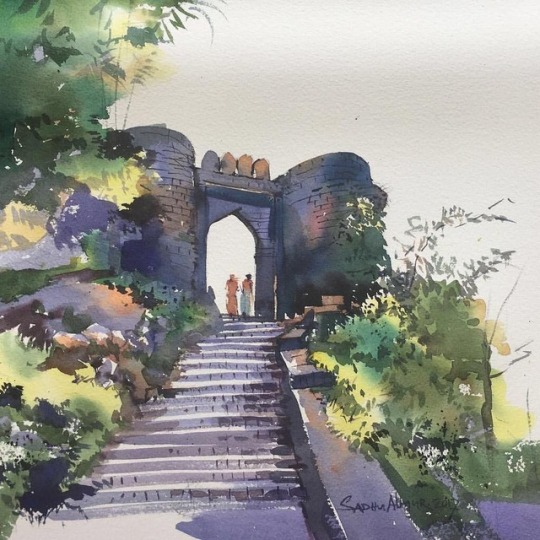
#Sinhagadfort - #watercolorpainting by #sadhualiyur⠀ ⠀ An amazing #watercolorist from #godsowncountry ⠀ ⠀ Follow @sadhualiyur⠀ ⠀ ⠀ #watercolorpainting #sinhagad #coolandwarm #fort #indianhistory #Maratha #Kondhana #TanajiMalusare #ChhatrapatiShivaji #coloringindiafoundation (at Sinhagad Fort)
#sadhualiyur#chhatrapatishivaji#maratha#coloringindiafoundation#fort#indianhistory#tanajimalusare#coolandwarm#watercolorpainting#godsowncountry#sinhagad#sinhagadfort#kondhana#watercolorist
1 note
·
View note
Photo

Sinhgad Memories with best friend #sinhgad #sinhgadkarandak2019 #kondhana #fort #friends #love #like #गड #सिंहगड #शिवाजीमहाराज #lovetheplace #historicalplace https://www.instagram.com/p/Bz56x99pcno/?igshid=1hmboetl60mqi
0 notes
Text

Hydrate brings you nutrient-rich ionized alkaline water from the serene lush green mountains of Kondhana. 99.99% pure water with a pH level of 8.5 mg/l.
0 notes
Text
History Of Kondana Kila
History Of Kondana Kila
Hello friends, welcome to my blog. Today we are talking about the History of a fort which has a different identity in India since last 2000 years which is Kondana Kila – The Immortal Fort
This is the “Fort of Sinhgad” which was earlier called the “Fort of Kondana” (History Of Kondana Kila)
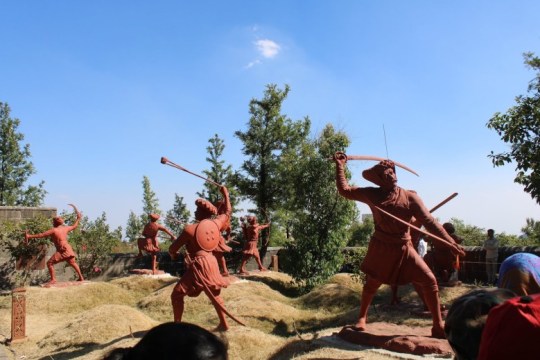
HIstory of Kondana Kila – Tanhaji Malusare Statue
Sinhgad Fort (Kondana Kila) is located at…
View On WordPress
#Fort of Sinhgad#Gad Ala Pan Singh Singh Galla#Kondhana Fort#SINHAGAD - THE IMMORTAL FORT#Tanaji Malusare#zerotohero
0 notes